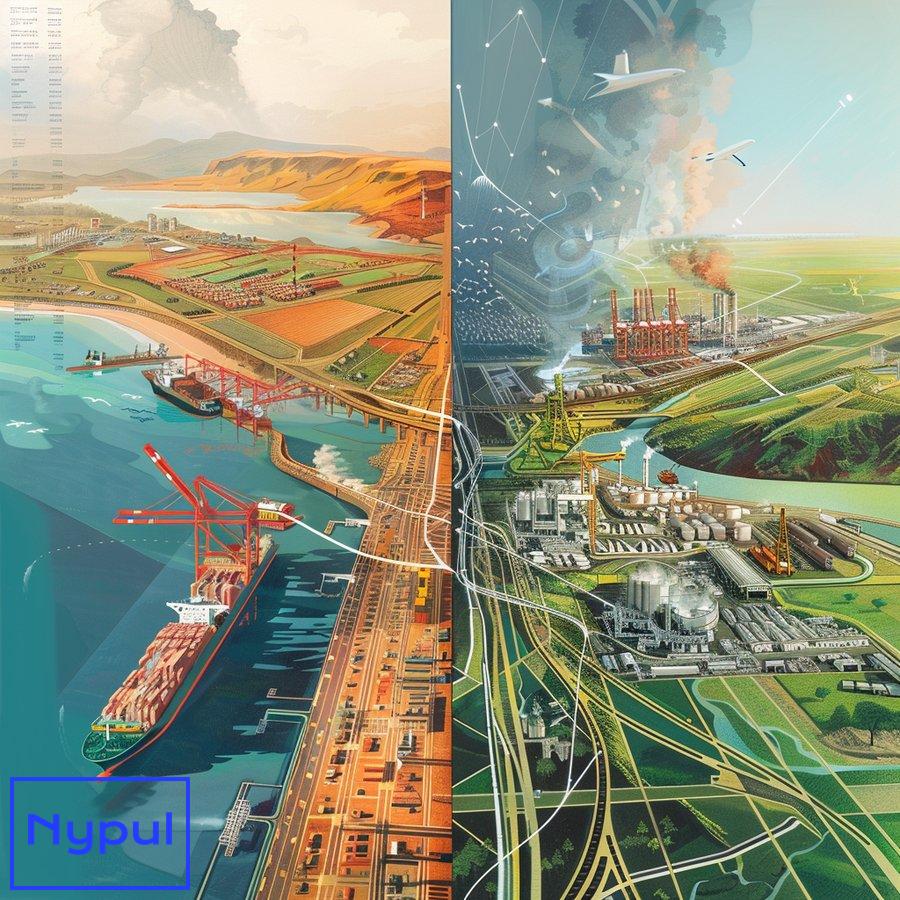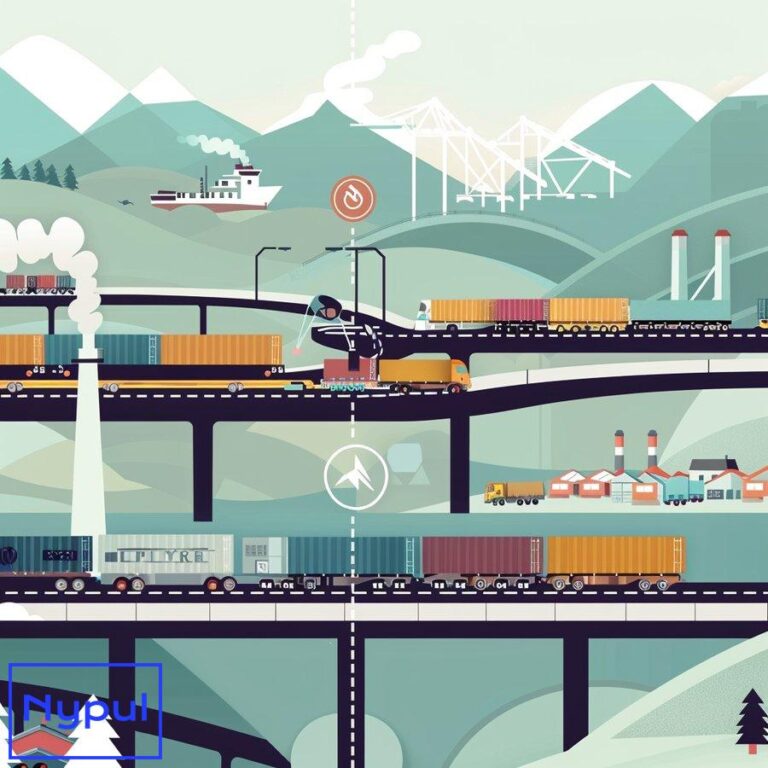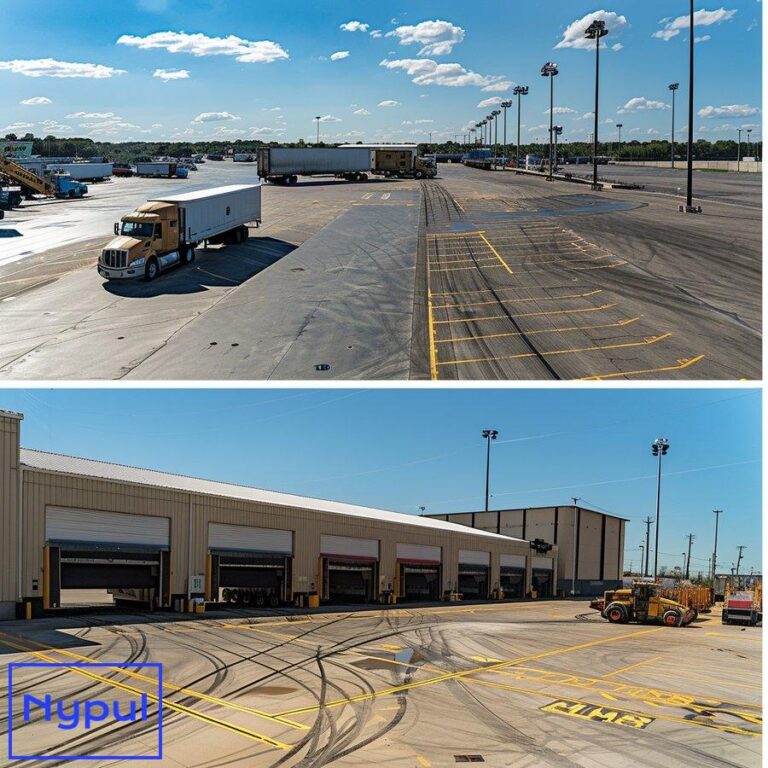What Is the Hinterland in Shipping
What is a hinterland in shipping?
The hinterland in shipping refers to the inland area served by a port, encompassing the region from which cargo originates or to which it is destined. This crucial concept in maritime logistics extends beyond the immediate vicinity of a port, often reaching far into the interior of a country or even crossing national borders. Hinterlands play a pivotal role in the global supply chain, acting as the connective tissue between seaports and the economic centers they serve.
The term “hinterland” derives from the German words “hinter” (behind) and “land” (country), aptly describing its position relative to coastal areas. In the context of shipping and logistics, hinterlands represent the economic catchment areas of ports, where goods are collected, distributed, and transported to and from maritime gateways.

Hinterlands are not static entities; they evolve and shift based on various factors, including:
Economic development: Changes in regional economic activities can expand or contract a port’s hinterland.
Infrastructure improvements: New roads, railways, or inland waterways can extend a port’s reach into previously inaccessible areas.
Competition: The emergence of new ports or the expansion of existing ones can lead to overlapping or contested hinterlands.
Trade patterns: Shifts in global trade routes and cargo flows can reshape hinterland boundaries.
Understanding the concept of hinterlands is essential for port authorities, shipping companies, and logistics providers. It influences strategic decisions on port development, infrastructure investments, and service offerings. For instance, a port with a vast and economically diverse hinterland may prioritize multimodal transport connections to efficiently move cargo between inland areas and the port.
The hinterland concept also extends to the notion of “captive” and “contestable” hinterlands. Captive hinterlands are regions where a particular port has a dominant or exclusive position due to geographical proximity or superior transport links. Contestable hinterlands, on the other hand, are areas where multiple ports compete for cargo, often through improved services or innovative logistics solutions.
In the modern era of global trade, the traditional concept of hinterlands has evolved. The advent of containerization, intermodal transport, and advanced logistics networks has led to the emergence of “discontinuous hinterlands.” These are non-contiguous areas served by a port, sometimes located in different countries or even continents, connected through efficient transport corridors and logistics chains.
For shippers and cargo owners, understanding a port’s hinterland is crucial for making informed decisions about routing options, transit times, and overall supply chain efficiency. A well-developed hinterland with robust transport connections can offer advantages such as:
Reduced transit times: Efficient hinterland connections allow for faster movement of goods between inland points and the port.
Lower costs: Well-organized hinterland logistics can lead to economies of scale and reduced transportation expenses.
Increased reliability: A diverse and resilient hinterland transport network can provide alternative routing options in case of disruptions.
Enhanced market access: Ports with extensive hinterlands offer shippers broader reach for their products or sourcing needs.
As global trade continues to evolve, the concept of hinterlands in shipping remains a fundamental aspect of maritime logistics. It shapes port development strategies, influences cargo routing decisions, and plays a crucial role in the efficiency and competitiveness of global supply chains. Understanding the dynamics of hinterlands is essential for all stakeholders in the shipping industry, from port operators and carriers to shippers and logistics providers.
How do hinterlands impact port operations and global trade?
Hinterlands exert a profound influence on port operations and global trade, shaping the dynamics of maritime logistics and international commerce. The intricate relationship between ports and their hinterlands creates a symbiotic ecosystem that drives economic growth, facilitates trade flows, and determines the competitive landscape of the shipping industry.

Impact on Port Operations
The characteristics and extent of a port’s hinterland directly affect its operational strategies and performance metrics. Ports must align their facilities, services, and infrastructure with the demands and peculiarities of their hinterlands to remain competitive and efficient.
Cargo Volumes and Types: The economic activities within a hinterland dictate the types and volumes of cargo passing through a port. For instance, a hinterland with a strong manufacturing base will generate substantial container traffic, while agricultural regions may require specialized bulk handling facilities. Ports must adapt their operations to accommodate these specific cargo profiles, investing in appropriate equipment and storage facilities.
Intermodal Connections: The efficiency of hinterland transport networks directly impacts a port’s ability to move cargo swiftly and cost-effectively. Ports invest heavily in developing robust intermodal connections, including rail links, inland waterways, and road networks, to ensure seamless cargo flow between the port and inland destinations. The quality and capacity of these connections influence port productivity, turnaround times, and overall competitiveness.
Port Capacity Planning: The size and growth potential of a hinterland inform long-term capacity planning decisions for ports. Anticipating future trade volumes based on hinterland economic projections helps port authorities determine when and how to expand facilities, dredge channels, or invest in new technologies.
Value-Added Services: Ports often develop value-added services tailored to the needs of their hinterlands. These may include specialized warehousing, customs clearance facilities, or industry-specific logistics solutions. Such services enhance the port’s attractiveness to shippers and strengthen its ties with the hinterland economy.
Operational Efficiency: The dynamics of hinterland connections influence port operations at a granular level. For example, the timing and frequency of inland transport services affect vessel scheduling, yard operations, and labor allocation within the port.
Impact on Global Trade
The relationship between ports and their hinterlands plays a crucial role in shaping global trade patterns and economic development.
Trade Facilitation: Well-developed port-hinterland connections act as enablers of international trade. They reduce transportation costs, improve reliability, and expand market access for businesses within the hinterland. This facilitation effect can stimulate economic growth and increase a region’s participation in global value chains.
Competitive Advantage: Ports with efficient hinterland connections gain a competitive edge in attracting cargo and shipping lines. This competition drives innovation in logistics services and can lead to the development of specialized trade corridors or logistics clusters.
Regional Economic Integration: Hinterland connections often transcend national borders, fostering regional economic integration. Cross-border infrastructure projects and harmonized customs procedures can create expansive economic zones centered around major ports.
Global Supply Chain Resilience: The diversity and robustness of hinterland connections contribute to the resilience of global supply chains. Multiple routing options and transport modes provide flexibility in the face of disruptions, whether caused by natural disasters, geopolitical events, or market fluctuations.
Trade Imbalances and Empty Container Repositioning: The economic characteristics of hinterlands can contribute to trade imbalances, affecting global container flows. Ports serving export-oriented hinterlands may face challenges with empty container repositioning, impacting global logistics efficiency.
Hinterland Competition and Cooperation
The impact of hinterlands on port operations and global trade is not limited to individual port-hinterland relationships. The interaction and competition between different port-hinterland systems create a dynamic landscape that shapes regional and global trade flows.
Port Competition: Ports compete not only based on their maritime facilities but also on the strength and efficiency of their hinterland connections. This competition can lead to infrastructure investments, service improvements, and innovative logistics solutions that benefit shippers and contribute to overall trade efficiency.
Hinterland Overlap: In many regions, the hinterlands of different ports overlap, creating contestable areas where cargo can be routed through multiple gateways. This competition drives ports to continually improve their services and hinterland connections to capture and retain cargo.
Cooperation and Coordination: Despite competition, there are also instances of cooperation between ports and within hinterland regions. Joint infrastructure projects, shared information systems, and coordinated planning can enhance overall logistics efficiency and expand the collective hinterland of participating ports.
Policy and Regulatory Implications
The critical role of hinterlands in port operations and global trade has significant implications for policy and regulation:
Infrastructure Investment: Governments and regional bodies often prioritize investments in hinterland infrastructure as part of national or supranational economic development strategies.
Customs and Trade Facilitation: Streamlining customs procedures and implementing trade facilitation measures along hinterland corridors can significantly enhance the competitiveness of port-hinterland systems.
Environmental Regulations: The environmental impact of hinterland transport is increasingly under scrutiny, leading to regulations promoting more sustainable transport modes and practices.
Competition Policy: Regulatory bodies must balance the benefits of cooperation in hinterland development with the need to maintain fair competition among ports and logistics providers.
The impact of hinterlands on port operations and global trade is multifaceted and far-reaching. As the global economy continues to evolve, understanding and optimizing these relationships will remain crucial for ports, shippers, and policymakers alike. The effective management of port-hinterland systems not only enhances the efficiency of individual ports but also contributes to the overall performance and resilience of global supply chains.
What are the key characteristics of port hinterlands?

Port hinterlands possess several key characteristics that define their nature, function, and impact on maritime logistics and global trade. Understanding these characteristics is crucial for port authorities, logistics providers, and policymakers in developing effective strategies for hinterland management and development.
Geographical Extent
The geographical extent of a port hinterland is one of its most fundamental characteristics. It defines the spatial reach of a port’s influence and cargo catchment area.
Primary Hinterland: This is the immediate area served by the port, typically characterized by high cargo volumes and strong transport connections. The primary hinterland often benefits from geographical proximity and natural advantages in accessing the port.
Extended Hinterland: Beyond the primary area, the extended hinterland encompasses regions that the port serves, albeit with lower intensity or frequency. These areas may have alternative port options but still find the port in question competitive for certain types of cargo or trade lanes.
Competitive Hinterland: This refers to areas where multiple ports compete for cargo. The boundaries of competitive hinterlands can shift based on factors such as transport costs, service quality, and market conditions.
Discontinuous Hinterland: In the modern era of global logistics, ports may serve non-contiguous areas connected through efficient transport corridors or specialized logistics chains. These discontinuous hinterlands challenge traditional notions of port catchment areas.
Economic Profile
The economic characteristics of a hinterland significantly influence the nature of cargo flows and logistics requirements.
Industrial Composition: The types of industries present in the hinterland determine the cargo mix handled by the port. For example, manufacturing-heavy hinterlands generate substantial container traffic, while agricultural regions may require specialized bulk handling facilities.
Trade Orientation: Whether a hinterland is primarily export-oriented or import-dependent affects the balance of cargo flows and influences port operations and logistics strategies.
Economic Diversity: Hinterlands with diverse economic activities tend to generate more stable cargo volumes and are less vulnerable to sector-specific fluctuations.
Growth Potential: The economic growth trajectory of a hinterland is a crucial factor in long-term port planning and investment decisions.
Transport Infrastructure
The quality and capacity of transport infrastructure connecting the port to its hinterland are critical characteristics that determine the efficiency of cargo movement.
Multimodal Connectivity: Well-developed hinterlands typically offer multiple transport options, including road, rail, and inland waterways. The availability and integration of these modes significantly impact the port’s competitiveness.
Infrastructure Capacity: The capacity of transport links, including highways, rail lines, and inland waterways, determines the volume of cargo that can be efficiently moved between the port and hinterland destinations.
Intermodal Facilities: The presence of inland terminals, dry ports, and logistics parks within the hinterland enhances the efficiency of cargo consolidation and distribution.
Last-Mile Connectivity: The quality of connections to final destinations within the hinterland, often referred to as “last-mile” logistics, is crucial for overall supply chain performance.
Logistics Ecosystem
The characteristics of the logistics ecosystem within the hinterland play a vital role in supporting efficient cargo flows.
Logistics Service Providers: The presence of a diverse and competitive logistics industry within the hinterland enhances service options and efficiency for shippers.
Warehousing and Distribution Centers: The availability and sophistication of warehousing facilities and distribution centers within the hinterland influence inventory management strategies and distribution patterns.
Value-Added Services: Hinterlands that offer a range of value-added logistics services, such as packaging, labeling, and light assembly, can attract higher-value cargo flows.
Information Systems: The level of integration of information systems across the hinterland logistics chain impacts visibility, coordination, and overall efficiency.
Regulatory Environment
The regulatory landscape within the hinterland significantly affects the ease and cost of moving cargo.
Customs Procedures: The efficiency and harmonization of customs processes across the hinterland impact transit times and compliance costs.
Trade Facilitation Measures: The implementation of trade facilitation initiatives, such as single window systems or authorized economic operator programs, can enhance the attractiveness of a port-hinterland system.
Environmental Regulations: Increasingly stringent environmental standards affect transport mode choices and logistics strategies within hinterlands.
Cross-Border Integration: For hinterlands spanning multiple countries, the degree of regulatory harmonization and border efficiency is a crucial characteristic.
Market Dynamics
The competitive landscape and market structure within the hinterland influence cargo routing decisions and logistics strategies.
Port Competition: The presence of competing ports serving the same hinterland creates a dynamic environment that can drive innovation and efficiency improvements.
Cargo Consolidation Points: The location and efficiency of cargo consolidation facilities within the hinterland affect routing decisions and the competitiveness of different logistics chains.
Shipping Line Strategies: The service patterns and inland logistics strategies of major shipping lines can significantly influence hinterland cargo flows.
Resilience and Adaptability
The ability of a hinterland to adapt to changing market conditions and recover from disruptions is an increasingly important characteristic.
Alternative Routing Options: Hinterlands with multiple transport corridors and port options tend to be more resilient to disruptions.
Flexibility in Cargo Handling: The ability to adapt to changing cargo types or volumes enhances the long-term viability of port-hinterland systems.
Digital Adoption: The level of digital technology adoption within the hinterland logistics chain impacts its ability to respond to market changes and optimize operations.
Understanding these key characteristics of port hinterlands is essential for effective port planning, logistics strategy development, and regional economic policy formulation. The interplay of these characteristics creates unique profiles for each port-hinterland system, influencing their competitiveness, efficiency, and role in global trade networks.
| Characteristic | Description | Impact on Port Operations |
|---|---|---|
| Geographical Extent | Defines the spatial reach of port influence | Determines cargo catchment area and competition with other ports |
| Economic Profile | Industrial composition and trade orientation | Influences cargo mix, volumes, and required port facilities |
| Transport Infrastructure | Quality and capacity of multimodal connections | Affects cargo flow efficiency and port competitiveness |
| Logistics Ecosystem | Presence of service providers and facilities | Enhances value-added services and attracts cargo |
| Regulatory Environment | Customs procedures and trade facilitation measures | Impacts transit times and compliance costs |
| Market Dynamics | Competitive landscape and consolidation points | Influences routing decisions and logistics strategies |
| Resilience and Adaptability | Ability to handle disruptions and market changes | Affects long-term viability and attractiveness to shippers |
This table summarizes the key characteristics of port hinterlands and their impact on port operations, providing a concise overview of the complex interplay between hinterlands and maritime logistics.
How are different types of hinterlands classified?

Hinterlands in the context of maritime logistics and port operations can be classified in various ways, reflecting their diverse characteristics, functions, and relationships with ports. Understanding these classifications is crucial for port authorities, logistics providers, and policymakers in developing targeted strategies for hinterland development and management. The following are the primary classifications of hinterlands:
Geographical Classification
This classification is based on the spatial relationship between the port and its hinterland.
Immediate Hinterland: Also known as the primary or captive hinterland, this area is in close proximity to the port and is naturally served by it due to geographical advantages. The immediate hinterland typically generates the highest cargo volumes and has the strongest transport connections to the port.
Extended Hinterland: This encompasses regions beyond the immediate hinterland where the port still maintains a significant presence but may face competition from other ports. The extended hinterland often requires more developed transport infrastructure to maintain efficient connections with the port.
Competitive Hinterland: These are areas where multiple ports compete for cargo. The boundaries of competitive hinterlands can shift based on factors such as transport costs, service quality, and market conditions. Ports often invest in infrastructure and service improvements to capture or retain cargo from competitive hinterlands.
Discontinuous Hinterland: In the modern global logistics landscape, ports may serve non-contiguous areas connected through efficient transport corridors or specialized logistics chains. These discontinuous hinterlands challenge traditional notions of port catchment areas and often result from strategic alliances or targeted service offerings.
Functional Classification
This classification is based on the primary economic function or cargo type associated with the hinterland.
Industrial Hinterland: Characterized by a strong manufacturing base, these hinterlands generate substantial container traffic and often require specialized logistics services.






